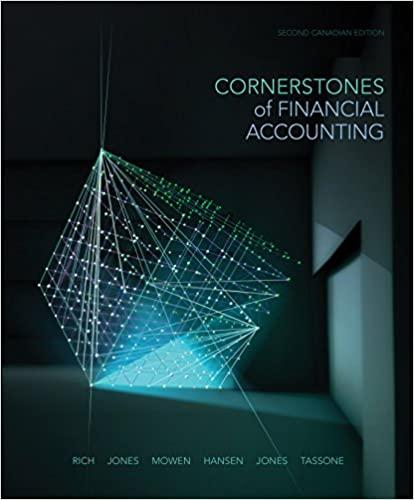Income, Cash Flow, and Future Losses} On January 1, 2018, National Bank loaned ($ 5,000,000) under a
Question:
Income, Cash Flow, and Future Losses}
On January 1, 2018, National Bank loaned \(\$ 5,000,000\) under a two-year, zero coupon note to a real estate developer. The bank recognized interest revenue on this note of approximately \(\$ 400,000\) per year. Due to an economic downturn, the developer was unable to pay the \(\$ 5,800,000\) maturity amount on December 31,2019 . The bank convinced the developer to pay \(\$ 800,000\) on December 31, 2019, and agreed to extend \(\$ 5,000,000\) credit to the developer despite the gloomy economic outlook for the next several years. Thus, on December 31, 2019, the bank issued a new two-year, zero coupon note to the developer to mature on December 31, 2021, for \(\$ 6,000,000\). The bank recognized interest revenue on this note of approximately \(\$ 500,000\) per year.
The bank's external auditor insisted that the riskiness of the new loan be recognized by increasing the allowance for uncollectible notes by \(\$ 1,500,000\) on December 31, 2019, and \(\$ 2,000,000\) on December 31, 2020. On December 31, 2021, the bank received \(\$ 1,200,000\) from the developer and learned that the developer was in bankruptcy and that no additional amounts would be recovered.
\section*{Required:}
1. Prepare a schedule showing annual cash flows for the two notes in each of the four years.
2. Prepare a schedule showing the effect of the notes on net income in each of the four years.
3. Which figure, net income or net cash flow, does the better job of telling the bank's shareholders about the effect of these notes on the bank? Explain by reference to the schedules prepared in requirements 1 and 2 .
4. A commonly used method for predicting future cash flows is to predict future income and adjust it for anticipated differences between net income and net cash flow. Does the National Bank case shed any light on the justification for using net income in this way rather than simply predicting future cash flows by reference to past cash flows?
\section*{Case
Step by Step Answer:

Cornerstones Of Financial Accounting
ISBN: 9780176707125
2nd Canadian Edition
Authors: Jay Rich, Jefferson Jones, Maryanne Mowen, Don Hansen, Donald Jones, Ralph Tassone





